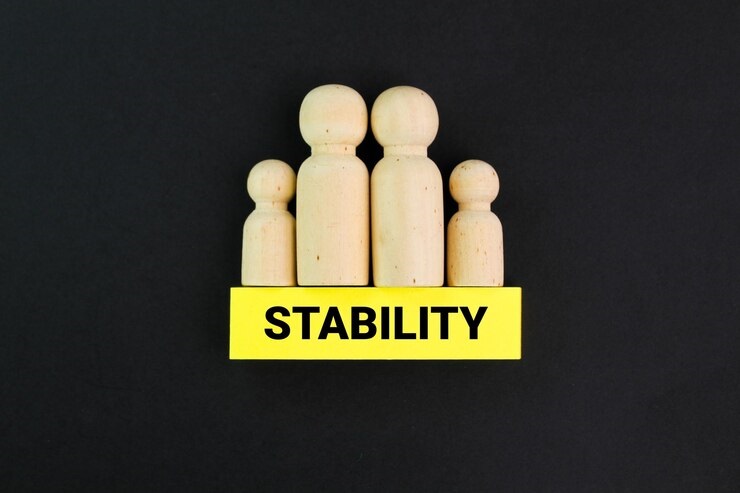Tether Vs Other Stablecoins: Which is the Best Option for Investors?
Stablecoins have been a matter of curiosity for investors who have been affected by the recent declines and events in the crypto money world. In this article, we provide you with important information about clarifying the best stablecoins for your questions about whether asset storage with stablecoins is reliable, how they are managed, the types of these stablecoins, and similar questions.

What is Stablecoin
A stablecoin is a type of cryptocurrency that aims to maintain a fixed value relative to a particular asset or basket of assets. This could be fiat currencies like the US dollar, commodities like gold, or other cryptocurrencies. Stablecoin’s goal is to provide a more stable and reliable store of value compared to other cryptocurrencies.
Stablecoins have gained popularity in recent years due to their potential to form a bridge between the traditional financial system and the cryptocurrency world. But, which one is more proper and can be considered as the best stablecoin?
What are the different types of stablecoins?
There are several different types of stablecoins, each with its unique characteristics and features. Some stablecoins are backed by physical assets such as gold or other commodities, while others are backed by fiat currency held in a bank account. Still, others are algorithmically stabilized using complex algorithms to maintain their value relative to a particular asset or basket of assets.
Whatever the type, stablecoins are issued and managed by organizations responsible for maintaining the coin’s value and keeping it stable. They are often used in conjunction with other cryptocurrencies such as Bitcoin or Ethereum to provide a stable alternative to conducting transactions or holding value.
What were the first Stablecoins?
Stablecoins are also increasingly being adopted and used in a variety of different applications, including a medium of exchange, a store of value, and a way to move money across borders.
• BitUSD and NuBits have been the first stablecoins to be produced. BitUSD was launched in 2014 as a decentralized stablecoin designed to maintain a stable value relative to the US dollar.
• Also launched in 2014, NuBits was another stablecoin designed to maintain a stable value relative to the US dollar.
• Tether (USDT) cryptocurrency operates on the blockchain connected to the ERC-20 protocol, was launched in 2015 by Tether Limited. Tether (USDT) is a stablecoin that is the virtual version of the US dollar. Its value is always stable at 1 USDT = $1. The company claims that for each Tether (USDT) cryptocurrency on the market, there is 1 US dollar in its vault.
Over the years, stablecoins have undergone many developments and improvements the get the title of the best stablecoin. Some early stablecoins, such as Nubist and BitUSD, were backed by physical assets or fiat currencies held in bank accounts, but such stablecoins faced challenges with transparency and security.

Why are Stablecoins important?
Stablecoins are important for several reasons. One of the main reasons for this is that they provide a stable and reliable store of value compared to other cryptocurrencies, which can be highly volatile.
Another reason is that the best stablecoins could make it easier for people to move money between different currencies and financial systems, and also make it easier for people who might not otherwise have the opportunity to access and use cryptocurrency.
Additionally, stablecoins are important because they have the potential to facilitate a wide variety of financial transactions and applications. Overall, stablecoins have the potential to revolutionize the way people and organizations use and interact with cryptocurrency and the financial system.
What are the types of Stablecoins?
We can examine the types of stablecoins under 3 headings:
Fiat-Backed Stablecoin
Fiat-backed stablecoins like Tether are stablecoins pegged to the value of a particular fiat currency, such as the US dollar or the Euro. These stablecoins are backed by a reserve of the fiat currency they are pegged to and are designed to maintain a stable value relative to that currency.
Crypto-Backed Stablecoin
Crypto-backed stablecoins are stablecoins pegged to the value of a particular cryptocurrency, such as Bitcoin or Ethereum. These stablecoins are backed by a reserve of the cryptocurrency they are pegged to and are designed to maintain a stable value relative to that cryptocurrency.
Algorithmic Stablecoin
Algorithmic stablecoins, also known as “seigniorage shares”, are stablecoins that are not backed by a specific asset or reserve, but are instead maintained by complex algorithms that ensure their stability. These algorithms can be designed to protect the value of a stable currency relative to a particular asset or basket of assets such as a fiat currency or a commodity.
What makes a Stablecoin safe?
There are many variables to consider when trying to determine the security of a stablecoin in crypto.
• The first is that the stablecoin is backed by a reserve asset. This reserve asset can be USD like for Tether, gold, oil, or a basket of currencies.
• The second factor is that the stablecoin issuer has enough cash on hand to meet all redemption requests.
• There is a third issue that makes stablecoin safe which is the issuer who should not be exposed to any credit risk.
What are the safest and as a result the best Stablecoins?
Based on three main aspects of robustness, the following stablecoins are believed to be the safest and best stablecoins in crypto:
• USD Circle (USDC) – Best overall
• Tether (USDT) – the best alternative to USDC
• Dai (DAI) – Best decentralized stablecoin
• Frax (FXS) – Best decentralized stablecoin for high returns
• Binance USD (BUSD) – Good centralized alternative
• Magic Internet Money (MIM) – A good, highly efficient centralized alternative

Is Tether (USDT) the best and the safest alternative?
The second safest and best stablecoin is Tether (USDT). Tether is also backed by USD reserves and is currently the largest stablecoin in circulation, with over USD 65 billion.
Tether’s name has stirred some controversy over the past year, but it has recently taken several steps to increase transparency by issuing regular audits of USD reserves.
It is difficult to identify a single best stablecoin, as different stablecoins may be better suited for different purposes and applications. Some factors to consider when evaluating stablecoins include stability, reliability, security, transparency, and adoption.
Some of the most widely used stablecoins include Tether (USDT), which is pegged to the US dollar and backed by US dollar reserves held in a bank account; DAI, an algorithmic stablecoin maintained by complex algorithms and designed to maintain a stable value relative to the US dollar; and USDC, a fiat-based stablecoin pegged to the US dollar and backed by US dollar reserves held in a bank account.
Ultimately, the best stablecoin for you will depend on your specific needs and goals, and it’s important to carefully consider the characteristics of different stablecoins before deciding which one is best for you in which Tabdeal can be considered as an ideal consultant.
Benefits of Stablecoin
There are three factors for a Stablecoin to be considered as a beneficial and ideal:
• Price Stability
• Accessibility
• Security
Stablecoin challenges
There are three factors for a Stablecoin to put it in challenge and make difficulties for its holders:
• Regulatory Uncertainty
• Lack of Liquidity
• High Costs

